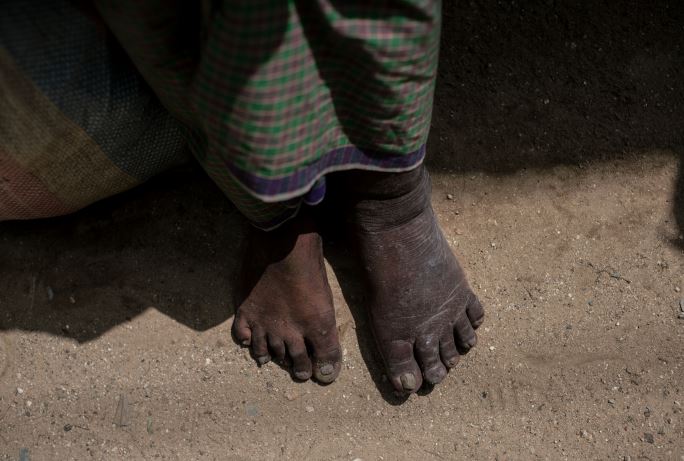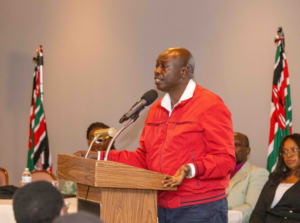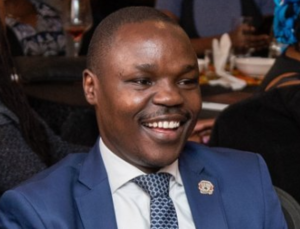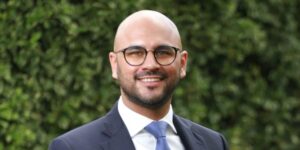How Kenya’s Fight Against Elephantiasis Is Becoming Blueprint For Africa

By Dr Sultani Hadley Matendechero
On my first field visit as head of the Kenyan Ministry of Health’s Neglected Tropical Diseases (NTDs) unit, my team and I travelled through Pongwe-Kidimu, a picturesque coastal region of Kenya, holding focus group discussions with health workers and members of the community to understand the challenges they were facing with NTDs. It was there, a young woman, not much older than 20 years and full of life and potential, stood to speak. Silent and timid throughout the discussion, we hadn’t noticed she was concealing a badly swollen leg typical of elephantiasis until she tearfully raised her voice to say, “This disease has ruined my life. Nobody is interested in me, in who I really am. And now I will never get married.” With these words, the pain of rejection, the loneliness, and the abrupt halt of what her life could have been for her, her family and her community all rested heavily on this one disease – a disease of poverty and neglect, one that could be prevented and treated if diagnosed early. This was the time I began to understand the devastation and heartbreak created by lymphatic filariasis (LF). Throughout my career in NTDs, these stories were unfortunately numerous. But years later, I have found new hope.
LF is more commonly known by its visible symptom, elephantiasis, for the thick, elephant-like skin that accompanies the painful and disfiguring swelling of limbs it can cause in the estimated 120 million people currently infected around the world. However, there is a new treatment approach that could lead us to end this ancient disease in our lifetime and with it, the heavy, but often hidden, social and economic burdens wreaked by ill-health. To date, only 14 out of 73 endemic countries worldwide have been recognized as reaching the LF elimination goals. But unfortunately, the vast majority of those are outside Sub-Saharan Africa, which constitutes 40% of the global burden of the disease.
The enthusiasm around this new triple drug therapy treatment approach, known as IDA for the names of the three drugs, is sparked by the potential that LF could be eliminated as a public health threat, and the millions of dollars saved in healthcare costs could be re-invested in other much needed areas – especially if applied in Africa where the majority of the 892 million people who need treatment reside. So, when I think of our work in Kenya, I see that eliminating LF will not only relieve much physical and psychological suffering for millions of people, it will also unlock healthier, more productive futures for their families and for our country as a whole. I think about that young woman I met in Pongwe-Kidimu three and a half years ago and see the next generation of Kenyans who won’t have to carry the same burden.
Read: HMD Global Launches Nokia 8.1 In Kenya
Today, this goal is within reach. Just a few months ago, Kenya proudly piloted the IDA treatment along three of our coastal sub-counties, Lamu East and Lamu West in Lamu county, and Jomvu in Mombasa county, as the first in Africa – and only second in the world.
IDA consists of a combination of three drugs – ivermectin, diethylcarbamazine, and albendazole – and could drastically reduce treatment time, down to two years, compared with traditional dual drug therapy that requires at least five years of drug administration. All three drugs in the new approach are completely safe to consume, even for individuals that are not infected, and are donated by pharmaceutical companies through the World Health Organisation (WHO) led global drug donation program.
As a health professional, I am inclined to tell you only about the game-changing science behind this new approach that promises to dramatically accelerate national progress for the long-awaited elimination of LF, a disease which often affects the most vulnerable and can be seen in Kenya sweeping through many communities – causing disability, severe pain, and social stigma.
But the new intervention is not just about science. It is about what is possible with innovative thinking, international collaboration, and willingness to keep pushing forward.
When Kenya first started the LF program in 2002, we were faced with many challenges. Successfully interrupting the disease meant long treatment plans requiring us to consistently mobilise communities to participate for five or more years, despite obstacles such as remote geographies and misconception about the medicines. Since restarting the program in 2015 in strong partnership with international organisations like the END Fund, the Bill & Melinda Gates Foundation, Evidence Action, and the WHO, the LF program focused on improving the observed low coverage rates, which is critical for the effectiveness of any mass drug administration intervention. We also recognized that this would be key for IDA to work. By the time we were preparing for implementation of IDA, we had worked on increasing the ratio of Community Drug Distributors (CDDs) – the vital frontline personnel responsible for implementing many of our public health initiatives – to community members and increasing the number of health professionals supervising the performance of the CDDs and their training. It is through this type of long-term global and local commitment and partnerships that we could lay the groundwork for becoming one of the first nations to roll out IDA and successfully reach high coverage.
During IDA rollout, we knew that to measure the success of the pilot, it would be critical to treat at least 80% of our target population. We are encouraged to learn that all three sub counties surpassed the 80% coverage target – a promising sign that Kenya could expand IDA to achieve the global target for eliminating LF. Our strategy for reaching high coverage included extensive efforts to raise awareness of the importance of taking the medication and to encourage participation in the campaign. Research was also undertaken to understand why particular groups, such as urban youth, have been largely unreached by past treatment rounds. The findings from this analysis provided guidance for advocacy and outreach strategies to better engage these populations. We also incorporated a range of platforms, from town criers, to social media, SMS, and posters, to sensitise and mobilise communities, with special efforts to reach remote areas, including accessing some communities by boat.
Kenya’s journey to being IDA-ready required meticulous coordination from which I am certain interested countries eligible for IDA can take hope and lessons. Planning and implementation involved a range of stakeholders, including researchers that participated in triple therapy studies conducted in other countries, major donors that offered financial and technical support, and national and county governments, the latter of which received the medicines and managed door-to-door drug administration through the established network of CDDs.
It is exhilarating to reflect on where we were at the very start of Kenya’s efforts to tackle LF and witness the massive turn out for IDA last November, which exceeded our expectations. The initial results indicate this triple-drug approach can be expanded to new areas – meaning that more areas that can shorten the path to LF elimination, and more trained health workers can be freed up to focus on other health issues. This would build on other national strategies for attaining universal health coverage goals and contribute to our momentum and progress in the fight against preventable diseases. We know that for countries seeking to be stronger socially and economically, there is no place for NTDs so we will forge ahead in exploring, testing, and adapting innovative, evidence-backed solutions like IDA. This is the journey of learning that Kenya is on, one for which we are proud to serve as a blueprint of what’s possible and hope other eligible countries, ministries of health, communities, activists and philanthropists will embark on as well.
Dr. Matendechero is the Head of Neglected Tropical Diseases Unit within the Ministry of Health








